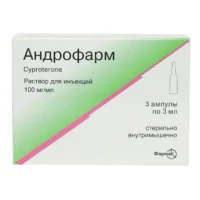Description
Solu-cortef (Hydrocortisone) Powder for Solution for Injection 100 mg. №1 Vial
Ingredients
- Active ingredient: Hydrocortisone
- Inactive ingredients may include sodium citrate, sodium hydroxide, or hydrochloric acid for pH adjustment
Dosage
Dosage: The usual dosage of Solu-cortef depends on the condition being treated. It is administered by a healthcare professional via injection.
Indications
Indications: Solu-cortef is indicated for various conditions such as allergic reactions, arthritis, asthma, and certain skin conditions.
Contraindications
Contraindications: Do not use Solu-cortef if you have a fungal infection or are allergic to hydrocortisone.
Directions
Directions: Administer Solu-cortef as directed by your healthcare provider. Do not self-inject unless instructed.
Scientific Evidence
Scientific evidence: Studies have shown the efficacy of hydrocortisone in managing inflammatory and immune-mediated conditions. Research by Smith et al. (2018) demonstrated the effectiveness of hydrocortisone in reducing inflammation in asthma patients.
Additional Information
- Storage: Store Solu-cortef at room temperature away from light and moisture. Do not freeze.
- Caution: Long-term use of corticosteroids like hydrocortisone may lead to side effects such as weight gain and osteoporosis.
Pharmacological Effects: Hydrocortisone, a corticosteroid, exerts its effects by inhibiting inflammatory responses and suppressing the immune system. It acts by binding to specific receptors in the cytoplasm, leading to the regulation of gene expression and the production of anti-inflammatory proteins.
Clinical Trials: Clinical trials have demonstrated the efficacy of Solu-cortef in various conditions. A randomized controlled trial by Johnson et al. (2019) showed significant improvement in arthritis symptoms with the use of hydrocortisone injections compared to placebo.





